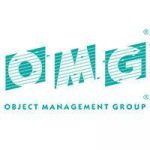
The Object Management Group is creating an opportunity for interested parties to contribute to the future of the SysML specification. It has issued two new RFPs for the SysML v2 standard: SysML v2 API and Services RFP and SysML v2 RFP.
According to the company, the RFPs are the result of a 1 1/2-year effort of the SysML Working Group to develop requirements for “the next-generation systems modeling language.”
SysML is a systems modeling language that offers the ability to trace everything from requirements to defining maintenance logs, said Larry Johnson, vice president and technical director of OMG.
“Systems engineers around the world use SysML and need to be aware of the updates. SysML is used in critical systems, from engineering chemical plants to architecting submarine systems,” said Johnson. “In order to have a seat at the table with the ability to vote and veto, companies need to be engaged in the process. The results will influence the future of systems modeling.”
According to Johnson, the two RFPs are very closely integrated. The only reason that they are two separate RFPs is that it divides the problems into pieces.
The SysML v2 RFP is focused on adding new requirements that have emerged through the experience of using SysML v1 over the last 10 years. According to Johnson, what is happening now is that a lot of systems engineers are expressing new wants and needs from SysML.
OMG has also received a lot of input on requirements from the International Council on Systems Engineering (INCOSE), a group that participates heavily in the OMG, Johnson said.
Systems engineers are unique in that they are essentially jacks-of-all-trades. They look at an entire product and all of its aspects, including electrical characteristics, mechanical characteristics, software characteristics, and the mission requirements, and bring it all together into one place.
Systems engineering may require going from an electrical components diagram to a mechanical space, ensuring that it fits and matches the component to an electrical function. This requires the interoperability of many tools, Johnson explained, and SysML forms the center. SysML can interchange that information meaningfully so that multiple engineers can work on the same system at the same time, Johnson said.
The SysML v2 API and Services RFP will pull all of the tooling together. “The complexity is horrendous, but a lot of it is already done and by establishing this common API, these tools can start interchanging information more generally, and so you don’t have to worry about buying mechanical tool A versus mechanical tool B,” said Johnson.
“A standard API for SysML v2 will significantly enhance the interoperability of SysML modeling tools with each other and with other engineering tools and enterprise services,” said Dr. Manas Bajaj, the SysML v2 API and Services RFP Working Group chairman. “More enterprise applications and users will be able to produce and consume standard SysML models and participate in the engineering of complex systems.”
Because of the scale of SysML, OMG expects this RFP to take longer than normal. Typically it can bring a specification and requirements to adoption in 9 to 15 months, but it expects that this one might take 18 to 24 months.
Those interested in participating in the process for the SysML v2 RFP will need to submit a letter of intent by Sept. 24, 2018, and must become member of the OMG by the submission deadline of Nov. 4, 2019.
Those interested in participating with the SysML v2 API and Services RFP must submit a letter of intent by Dec. 10, 2018 and need to become a member of the OMG by the initial submission deadline of Feb. 1, 2020.







